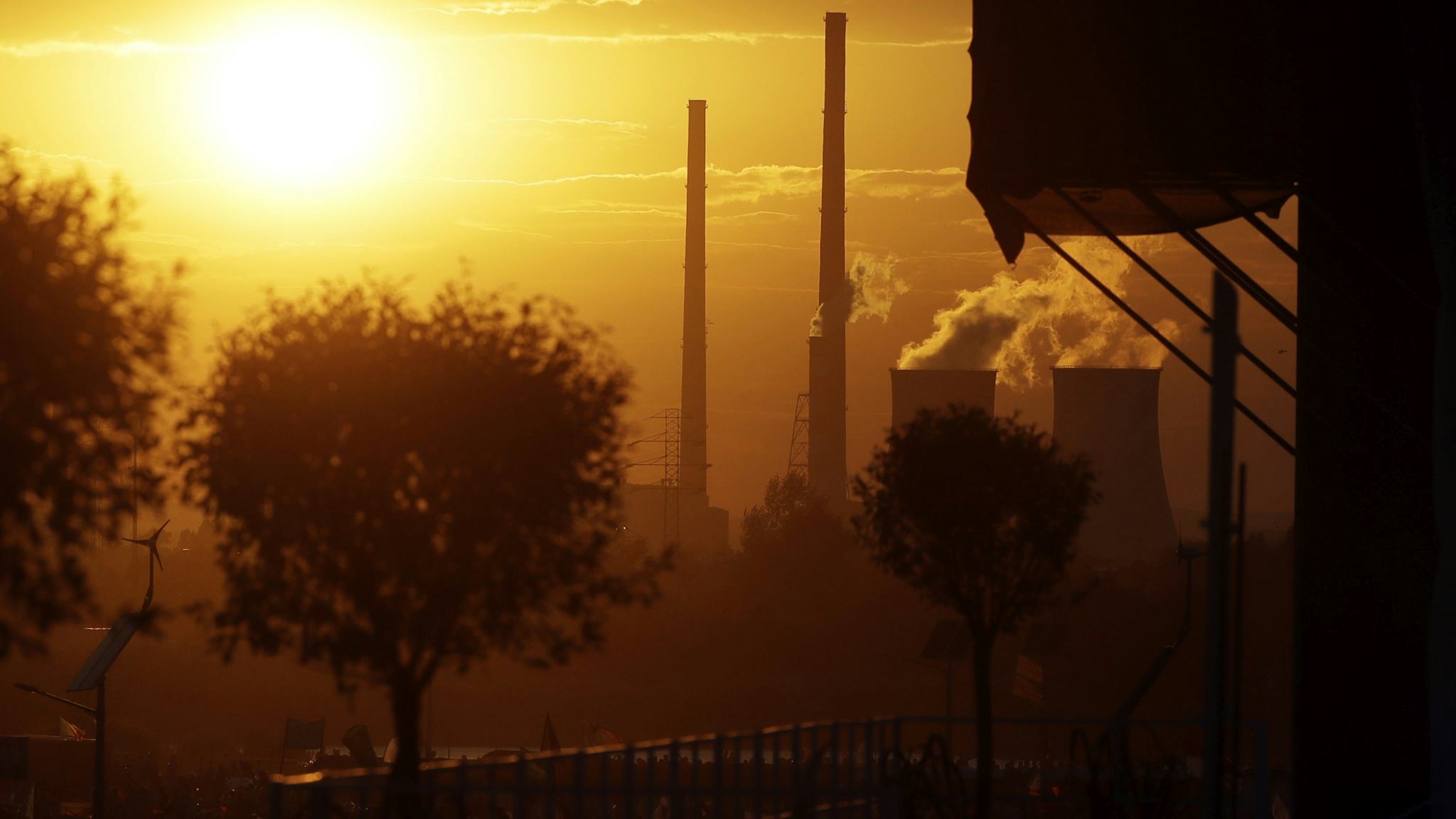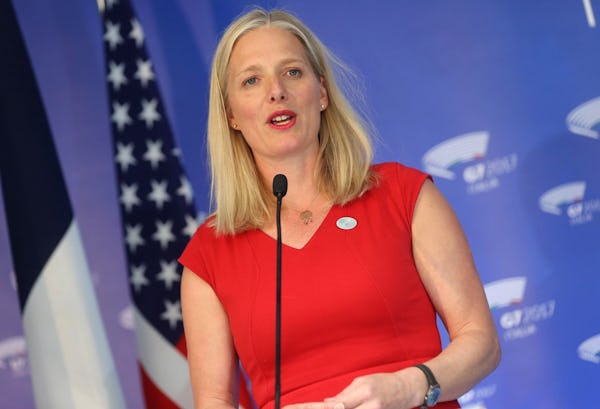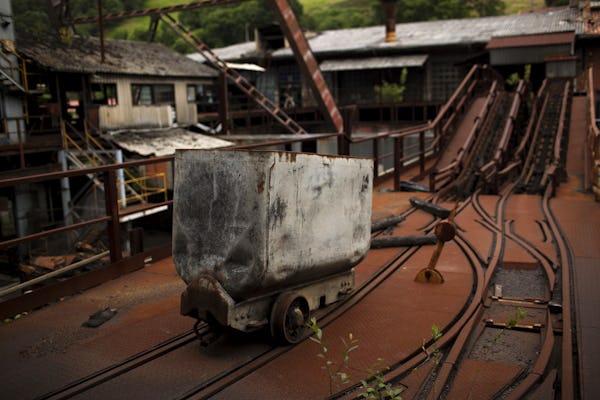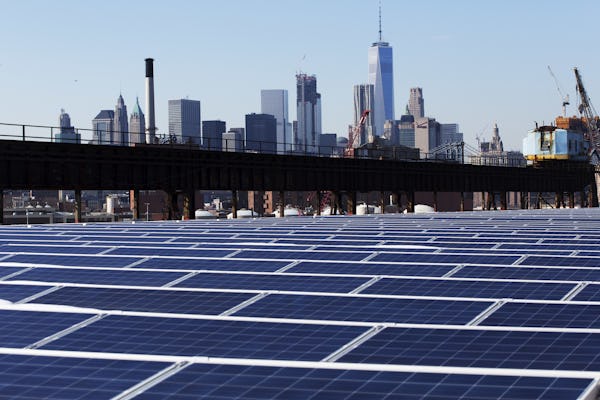Industrial jobs in danger when the climate is to be saved
The trade unions' solution for a greener world is new jobs with good working conditions. The critics argue that there's not enough time.
”We can either protect industrial jobs in the global north or save the climate”, says political scientist Tadzio Müller.

Smoke billows from chimneys of an industrial plant in Brzegi, near Krakow, Poland.
Politicians, businesses, and unions all agree: there are no jobs on a dead planet. But the road to fewer emissions is full of opinions.
While the amount of CO2 in the atmosphere is expected to reach record levels this year, the work towards a “just transition” continues. The aim is to secure workers’ interests when countries and employers convert to more climate friendly ways of doing business.
“It is extremely urgent and I’m worried. But if employers, governments, and big financial interests had been more interested in the carbonization two decades ago we would have been in a great position,” says Samantha Smith.
She’s the director of the Just Transition Centre, created three years ago by the International Trade Union Confederation, the ITUC, to gather unions, organisations, businesses, and countries in a social dialogue.
The UN climate change conference COP 24 took place in December 2018 in Katowice, Poland, and “just transition” was high on the agenda. 53 states, including Sweden, signed the ”The Solidarity and Just Transition Silesia Declaration”, which states that the countries must consider workers’ perspectives while shifting to climate friendly policies.

Samantha Smith at Just Transition Centre, founded in 2016 by the ITUC.
In Sweden, issues on this matter are being discussed regularly at the Swedish Trade Union Confederation, LO, and Sida, the Swedish International Development Cooperation Agency, among others. Sida recently donated 1,5 million euros to the organisation Bankwatch, to support the transition towards a coal free Eastern Europe.
Samantha Smith points out that every sector in every country will be affected in order to reach the 1,5 degree global warming target.
”We wanted to start with rich countries because they have the wealth and capacity. In some poor countries you have a number of issues going on at the same time, one is recognizing basic labor rights which is also human rights.”
Tadzio Müller, political scientist and senior advisor on climate justice for the leftist foundation Rosa Luxembourg, agrees. He, on the other hand, is even more drastic.
”If Sweden, Germany and Great Britain want to do their bit to save the climate they have to shut down old industrial infrastructure within the next 10-15 years so that the rest of the world can still emit some carbon emissions.”
Tadzio Müller is critical of the trade union movement. The concept of “just transition” was first used by union activists in the U.S. in the 1980s.
”We have to be honest that it was, at least in part, the same industrial trade unions that called for a just transition that were fighting against ambitious climate politics and policies to save jobs,” he says. He mentions Germany’s mining unions as an example.

Tadzio Müller at the Rosa Luxemburg Foundation.
Tadzio Müller points out that he is in no way interested in limiting workers’ interests.
”I am absolutely for giving workers every social protection that we can manage. I would even argue that a universal guaranteed income would be a great way to transition in heavy industrial regions, like western Germany or the north of France. I don’t oppose just transition, but the fact that the function of just transition has been to slow down ambitious climate action.”
Samantha Smith at the Just Transition Centre says to her critics:
”What is your alternative? Especially in a democracy, like for example Germany. How are you going to shut down coal mines if local government and all the people working in the mines don’t agree to it? ”
She points out that it’s better to do something than nothing.
”And it’s better to do something that will support social justice and strengthen the labor movement and democracy to get down emissions.”
Translation: Cecilia Uder
***
JUST TRANSITION – COUNTRIES AND FACTS
Canada

Catherine McKenna, Minister of the Environment and Climate Change in Canada, speaks at a G7 meeting.
The government has decided to phase out coal as a source of energy by 2030 while making investments in natural gas instead. This is a part of Canada’s ”Pan-Canadian Framework on Clean Growth and Climate Change”.
Catherine McKenna, Minister of Environment and Climate Change, announced that a task force has been created, with representatives from unions, councils, and businesses working together to make the transition from coal to natural gas as fair as possible for the workers in the sector. The President of the Canadian Labour Congress has been put in charge of the project.
Spain

26 coal mines were closed in Spain by the turn of the year.
In 2016, the government launched a plan worth almost 2 billion euros to aid the closure of 26 coal mines. The mines were closed by the end of 2018 and approximately 2,000 workers were affected. The transition plan included early retirement for workers over 48 years of age and education in green industries for the rest.
The Spanish trade unions celebrated the agreement but one group of 800 workers, employed by subcontractors of the mining industry, were not included in the transition. They formed the network ”Plataforma de Santa Bárbara” and gathered to protest that they had been abandoned by the unions and the political parties.
Kenya

Minibuses in Nairobi are going to be replaced by bigger and more eco friendly buses.
The transport system in Kenya’s capital Nairobi is overly chaotic and spews out huge amounts of pollution each year. To tackle this, the government of Kenya has begun the transition towards a new system called “Bus Rapid Transit”, with fewer but larger buses.
This means fewer jobs, so now the Kenyan unions are working together with the International Transport Workers’ Federation, the ITF, to ensure a fair transition that provides new “green” jobs for the workers.
USA

Solar energy installation in Brooklyn, New York.
A massive transition is taking place in the state of New York, with 1,5 billion euro projects that include investments in renewable energy. Governor Andrew Cuomo started the initiative “The Clean Climate Careers initiative” in 2017, with the goal of creating 40,000 new climate friendly jobs by 2020.
The jobs will be in major renewable energy projects, including wind and solar. Big money is being invested to redirect personnel to create a more climate friendly workforce.
What is “just transition”?
The term has origins from the 1980s but it took until 2013 for the United Nations' agency ILO to put its foot down and create guidelines for “a Just Transition towards environmentally-sustainable economies and societies for all".
The Paris agreement from 2015 also includes mentions of “just transition”. Through the Paris agreement, governments commit to making sure that workers continue to have fair conditions during the climate adaption. The International Trade Union Confederation ITUC founded the Just Transition Centre in 2016, in order to bring more attention to the matter.
***
These are the 25 biggest carbon emitters in the world. These companies produced a fifth of the global carbon emissions, according to a review by Swedish newspaper Dagens Industri.
1. Coal India
2. PJSC Gazprom
3. Exxon Mobil Corporation
4. Cummins Inc.
5. Thyssenkrupp AG
6. Rosneft OAO
7. Royal Dutch Shell
8. China Petroleum & Chemical Corporation
9. China Shenhua Energy
10. Rio Tinto
11. Petrochina Company Limited
12. BHP Billiton
13. Petróleo Brasileiro SA – Petrobras
14. Korea Electric Power Corp
15. BP
16. Total
17. Valero Energy Corporation
18. Chevron Corporation
19. Toyota Motor Corporation
20. Wistron Corp
21. United Technologies Corporation
22. Peabody Energy Corporation
23. YTL Corp
24. Phillips 66
25. Volkswagen AG








